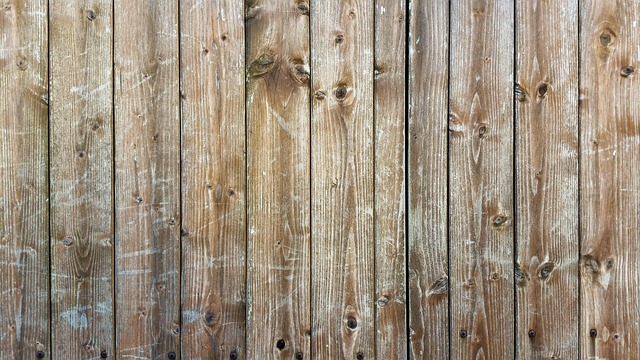Fences are not just structural; they’re often the centerpiece of your outdoor space, reflecting your style and enduring through seasons. Fence staining and sealing is an art that transforms wood from ordinary to extraordinary, preserving its beauty and longevity. This guide delves into the intricacies of fence staining and sealing, equipping you with the knowledge to enhance your wooden fence’s appearance and protect it from the elements. From understanding staining benefits and types to application techniques and maintenance tips, we’ve got you covered.
- Understanding Fence Staining: Benefits and Types
- Preparing Your Wooden Fence for Staining
- Choosing the Right Stain: Color and Formula
- Application Techniques for Even Coverage
- Sealing: The Final Layer of Protection
- Maintenance Tips for Longevity and Beauty
Understanding Fence Staining: Benefits and Types
Fence staining is an excellent way to enhance the appearance and longevity of your wooden fence. It involves applying a protective coat of pigment to the fence’s surface, which can improve its overall aesthetics and prevent damage caused by elements like UV rays, moisture, and fungi. The process not only adds color but also seals the wood, making it more durable.
There are various types of fence staining products available, each offering unique benefits. Some stains provide a semi-transparent finish that allows the natural grain of the wood to show through, while others offer full coverage with vibrant colors. Water-based and oil-based are two primary categories, with water-based options being more environmentally friendly and easier to clean up. Oil-based stains, on the other hand, tend to last longer and provide better protection against harsh weather conditions.
Preparing Your Wooden Fence for Staining
Before applying any stain or sealant, preparing your wooden fence is a crucial step in ensuring optimal results. Start by thoroughly cleaning the fence to remove any dirt, dust, mildew, or mold. Use a pressure washer or a soft-bristled brush with mild detergent and water. Pay special attention to areas with buildup or old stains. This initial cleaning step will open up the wood’s pores, allowing for better absorption of the subsequent stain.
Once cleaned, inspect the fence for any damaged or loose boards, splinters, or nails. Repair these issues using suitable materials like wood putty, new nails, or screws. Sanding the fence gently can also help smooth out irregularities and create a more even surface. Making sure your wooden fence is in good condition ensures that the stain adheres well, providing a long-lasting, vibrant finish.
Choosing the Right Stain: Color and Formula
Choosing the right stain for your wooden fence is a crucial step in ensuring both aesthetics and longevity. Consider the color you desire, keeping in mind that lighter shades allow more light penetration, making the wood breathe and reducing fade issues over time. Dark colors, while adding depth, may trap moisture against the wood, potentially leading to rot or mold.
Formulas also vary; some stains are water-based, offering a less toxic option with easier cleanup, while others are oil-based, providing deeper penetration and longer lasting protection. Always read product labels for specific application instructions and ensure the stain is suitable for outdoor use and wooden surfaces.
Application Techniques for Even Coverage
When staining and sealing wooden fences, achieving even coverage is essential for a uniform and aesthetically pleasing finish. The application technique plays a pivotal role in ensuring the stain penetrates evenly into the wood’s surface and dries consistently across the entire fence. One effective method is to use a wide brush or roller, allowing for broad strokes that cover more area with each pass. This approach helps prevent missed spots and ensures an even color distribution.
For tight corners and intricate details, switch to smaller tools like paint pads or brushes. These enable precise application in hard-to-reach places while maintaining control over the stain’s flow. Staining in the direction of the wood grain is also crucial; this technique allows the stain to soak into the wood fibers more effectively, resulting in a richer, more durable finish that enhances the natural beauty of the wooden fence.
Sealing: The Final Layer of Protection
Sealing is the final layer of protection for your wooden fence, acting as a barrier against the elements and prolonging its lifespan. After staining, applying a high-quality sealant fills in tiny pores and gaps in the wood’s surface, preventing water, dirt, and other contaminants from seeping in and causing rot or fading. Think of it as an extra shield that keeps your fence looking fresh and vibrant for years to come.
Choosing the right sealant is key. Water-based sealants offer a low-odor option with easier cleanup, while oil-based sealants provide deeper penetration and superior protection against UV rays. Consider factors like climate, exposure to sunlight, and traffic on your fence when selecting a sealant formulated for long-lasting performance.
Maintenance Tips for Longevity and Beauty
Regular maintenance is key to keeping your wooden fence looking its best and ensuring a long lifespan. A simple cleaning routine can go a long way in preventing buildup and dirt from damaging the finish. Use a soft-bristled brush or sponge to gently scrub the fence with warm soapy water, then rinse thoroughly. This easy step will keep your fence looking fresh and vibrant.
Additionally, applying a protective sealant every few years is essential. Sealants create a barrier against moisture, UV rays, and other elements that can cause wood to rot or fade. By regularly inspecting your fence and addressing any issues promptly, you’ll maintain its beauty and structural integrity for years to come.
